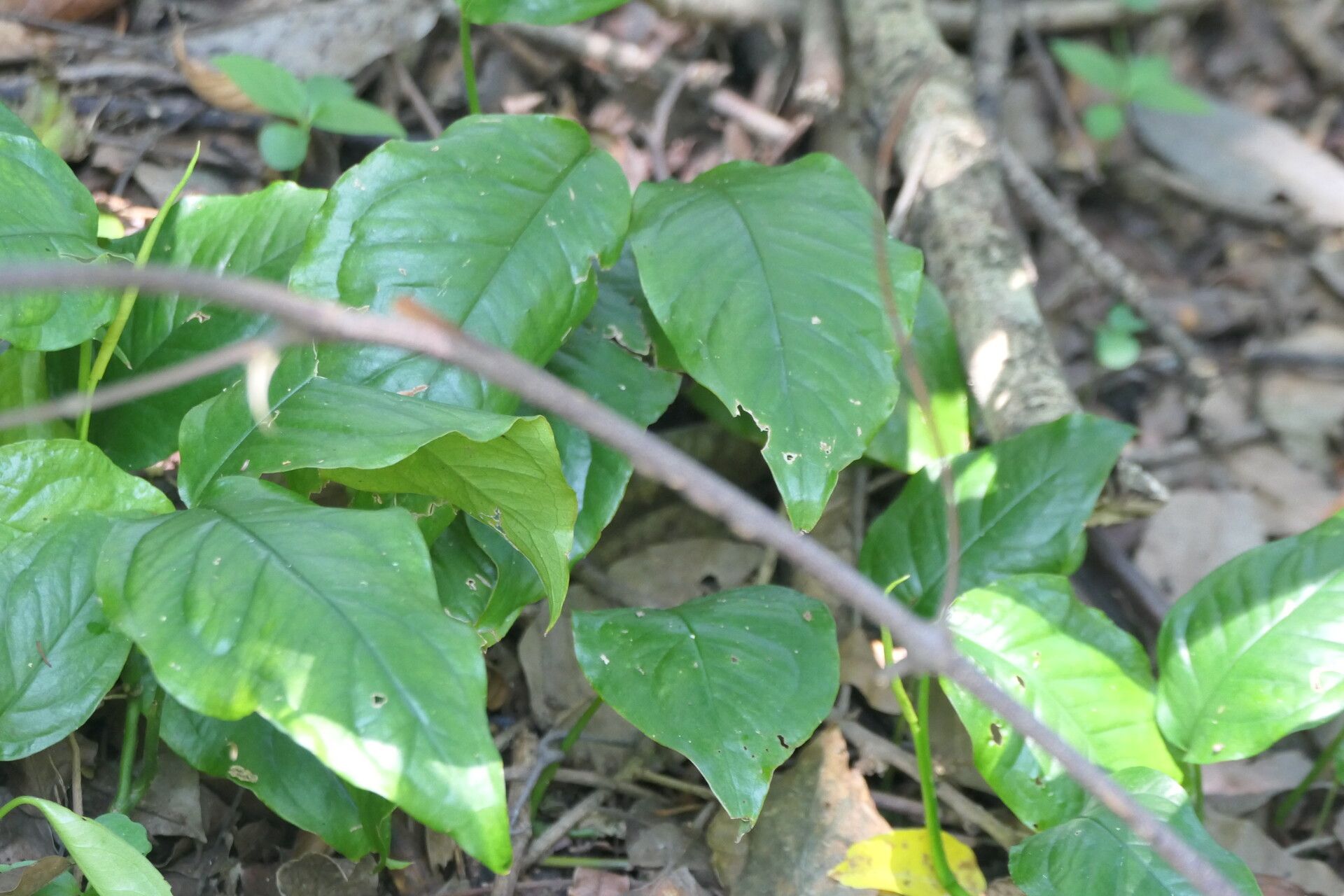Culcasia scandens

|
|
Culcasia scandens Common Names: Climbing Arum, Greater Climbing Scientific Classification Kingdom: Plantae Clade: Tracheophytes Clade: Angiosperms Clade: Monocots Order: Alismatales Family: Araceae Genus: Culcasia Species: C. scandens Binomial Name: Culcasia scandens P.Beauv. Synonyms: Caladium scandens (P.Beauv.) Willd., Culcasia gracilis N.E.Br., Culcasia lancifolia N.E.Br., Culcasia saxatilis A.Chev., Denhamia scandens (P.Beauv.) Schott Morphological Description Culcasia scandens is a robust, evergreen, epiphytic or terrestrial climber
with wiry, warty stems up to 5–10 m long, adhering to trees via clasping roots.
Key features include: · Stems: Slender, 2–6 cm thick, verrucose, rubbery, producing
adventitious roots · Leaves: Ovate to lanceolate, 10–20 cm long, 4–8 cm wide, glossy
green, fragrant, rich in coumarin · Inflorescence: 1–3 per stem; peduncles 2.5–6 cm; spathe green, mucronate,
2–3.5 cm; spadix yellow-orange, 2–3 cm, constricted, stipe 4 mm · Fruit: Red berries, spherical, 10–12 mm x 8 mm, on a persistent
spadix The plant’s adaptability
allows it to thrive as an epiphyte or on the forest floor (Burkill, 1985). Distribution and Habitat Culcasia scandens is native to western tropical Africa, from Senegal to
Angola, including Nigeria, Ghana, and Cameroon. It inhabits: · Regions: Tropical rainforests, savanna edges, stream margins · Climate: Humid, 25–35°C, rainfall 1,000–2,500 mm annually · Soil: Moist, well-drained, often organic-rich · Elevation: Sea level to 1,200 m It prefers shaded or
semi-shaded forest understories (Fern, 2022). Ethnopharmacology Culcasia scandens is widely used in African traditional medicine, with studies
validating its applications: · Pain Relief: Leaf infusions in Nigeria for toothache and earache;
methanol extracts reduce writhing in mice (52% at 200 mg/kg) (Okoli & Akah,
2000). · Wound Healing: Sap in Ghana treats cuts; inhibits hemolysis in RBCs, aiding
tissue repair (Okoli et al., 2008). · Gastrointestinal Issues: Bark decoctions in Cameroon for stomach
aches; suppresses paw edema in rats (CS-1 > fraction C > CE) (Okoli et
al., 2008). · Anti-inflammatory: Leaves in Ivory Coast for swelling;
sitosterol (CS-1) inhibits topical edema in mice (Okoli et al., 2008). · Anti-emetic: Root pulp in Sierra Leone prevents vomiting (Burkill, 1985). · Pregnancy Support: Stems in Nigeria as anti-abortifacient
(Bown, 2000). · Venereal Diseases: Leaf baths in Angola for syphilis
(Burkill, 1985). Phytochemistry Bioactivity is linked to
diverse compounds: · Alkaloids: In sap, irritant, fish poison (Burkill, 1985) · Sterols: Sitosterol (CS-1)—anti-inflammatory (Okoli et al., 2008) · Flavonoids: Antioxidant, anti-inflammatory (Okoli et al., 2008) · Fatty Acids: Palmitic, linoleic—skin healing (Maynard et al., 1992) · Coumarin: Fragrant, anticoagulant potential (Fern, 2022) · Calcium Oxalate: Irritant in tissues (Boyce & Croat,
2011) ⚠ Toxicity Profile: Sap and tissues contain calcium oxalate
crystals, causing skin/mouth irritation. High doses of methanol extract (CE)
cause gastrointestinal distress in rats; LD₅₀ > 5 g/kg (safe at low doses).
Avoid in pregnancy unless processed (Okoli et al., 2008). Additional Uses · Ecological: Insect repellent; roots mixed with maize to boost yields · Economic: Leaves for perfume (coumarin); stems for fiber · Veterinary: Sap treats goat ailments in Sierra Leone · Conservation: Least Concern (IUCN, 2011), but threatened by habitat loss References
External Links More Pictures |
|
| Compounds of Culcasia scandens | |
| References |